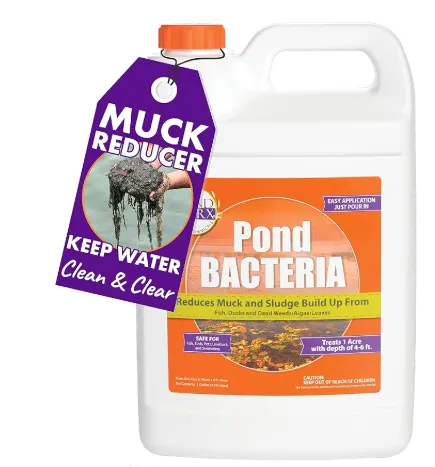

What Makes Butterfly Koi Special? Butterfly Koi size
Butterfly koi size, Butterfly koi are a hybrid species derived from standard koi and long-finned carp. They are renowned for their elegant, flowing fins, which resemble butterfly wings, hence their name. Their slender bodies and vibrant colors create a mesmerizing spectacle in any pond.
But their size? That’s a whole different discussion. Butterfly koi have unique growth characteristics influenced by environmental factors, care practices, and genetics.
History and Evolution of Butterfly Koi Butterfly Koi size
Butterfly koi originated in Asia when breeders began experimenting with crossing traditional koi with wild carp species that had long, flowing fins. The result was a hybrid fish that retained the striking color patterns of koi while boasting elongated fins that added an element of elegance.
These koi have since become a favorite among hobbyists, with their beauty often compared to a dance of butterflies across the water.
Physical Traits of Butterfly Koi
Butterfly koi are defined by their:
- Long, flowing fins that extend gracefully as they swim.
- Bright, vibrant color patterns, ranging from solid hues to intricate designs.
- Slender bodies, which set them apart from their chunkier standard koi cousins.
How Big Do Butterfly Koi Grow?
Average Size in Ponds
Under typical conditions, butterfly koi grow to an average of 20-24 inches (50-60 cm). However, their fins make them appear even larger, creating an illusion of greater size.
Maximum Size Achievable
With optimal care, some butterfly koi can reach lengths of 36 inches (90 cm). Achieving this size requires a spacious pond, a nutritious diet, and meticulous water quality management.
Factors That Influence Butterfly Koi Size
1. Pond Dimensions
A butterfly koi’s growth is directly proportional to the size of its habitat. A pond with at least 1,000 gallons of water and a depth of 3-4 feet is essential for proper growth. Smaller ponds may stunt their development.
2. Diet and Nutrition
Feeding high-quality koi pellets rich in protein, along with treats like bloodworms and vegetables, ensures consistent growth. Butterfly koi thrive on a varied diet that mimics their natural feeding habits.
3. Water Quality and Temperature
Stable water conditions are crucial. Regular testing for pH (ideal range: 6.8-8.2), ammonia, and nitrites, along with maintaining a temperature between 65-75°F (18-24°C), creates the perfect environment.
4. Genetics
Genetics play a significant role in determining maximum size. Butterfly koi bred from larger parents tend to have greater growth potential.
Butterfly Koi vs. Standard Koi
While standard koi are often bulkier, butterfly koi are known for their elongated fins, which can add several inches to their overall appearance. Both species grow at similar rates, but butterfly koi’s unique fins give them a more dramatic presence in ponds.
Setting Up the Perfect Pond for Butterfly Koi
- Size Matters: Start with at least 1,000 gallons of water.
- Depth: Aim for a pond depth of 3 feet or more.
- Filtration: Invest in a high-capacity filtration system to keep the water clean.
- Aeration: Include a fountain or air pump for oxygenation.
Feeding Tips for Butterfly Koi Growth
- Use high-protein koi pellets as the primary food source.
- Supplement with fresh vegetables like lettuce and spinach.
- Avoid overfeeding—feed only what they can consume in 5 minutes.
Maintaining Water Quality for Healthy Growth
- Perform weekly water tests.
- Use biological filtration to maintain clarity.
- Avoid overcrowding; a single koi needs 250 gallons of water for optimal health.
Common Myths About Butterfly Koi Size
- “They’ll outgrow their pond.”
Not true! Their growth adjusts to the size of their environment, but stunted growth can lead to health issues. - “Small tanks are sufficient.”
Absolutely not. Small tanks can stress koi and stunt their development.
Long-Term Care for Mature Butterfly Koi
As butterfly koi grow, they require more attention to their diet, pond maintenance, and overall care. Regular health check-ups ensure they stay vibrant and disease-free.
Conclusion Butterfly Koi size
Butterfly koi are more than just beautiful—they’re living works of art. While their size is a testament to proper care, their elegance and grace bring unparalleled beauty to any pond. By understanding their growth needs and providing the ideal environment, you can enjoy these stunning creatures at their full potential.
FAQs Butterfly Koi size
- How fast do butterfly koi grow?
On average, they grow 2-4 inches per year, reaching full size in about 3-4 years. - What’s the largest recorded butterfly koi?
Some butterfly koi have been documented to exceed 36 inches, fins included. - Do butterfly koi require special food?
Yes, high-protein, nutrient-rich food ensures optimal growth and health. - Can butterfly koi live in small ponds?
They can survive, but their growth will be stunted. A larger pond is always better. - How can I tell if my butterfly koi is healthy?
Vibrant colors, active swimming, and regular eating habits are good signs of health.
You may also like
- https://giobelkoicenter.com/koi-fish-dragon/
- https://giobelkoicenter.com/how-to-make-goldfish-grow-faster/
- https://giobelkoicenter.com/koi-betta-fish/
- https://giobelkoicenter.com/why-are-koi-fish-so-expensive/
- https://giobelkoicenter.com/understanding-and-treating-bloated-koi-fish/
- https://giobelkoicenter.com/why-goldfish-change-color/
Table of Contents
Passionate about fish keeping since elementary school in the 1980s, Giovanni Carlo has dedicated countless hours to collecting and breeding a diverse array of ornamental freshwater fish. From vibrant guppies and majestic koi to striking bettas and classic goldfish, he continues to explore the fascinating world of aquatics, sharing knowledge and enthusiasm with fellow fish enthusiasts.